Spiritually strong and traditionally revered, the stunning temples in Bihar beckon all travellers in search of peace and tranquillity.
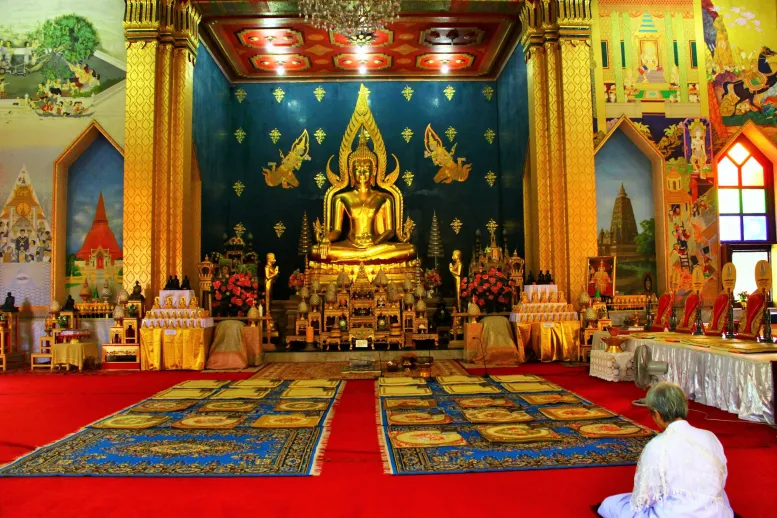
Bihar, is a land steeped in spirituality and rich in cultural heritage. Nestled amidst its picturesque landscapes, the temples of Bihar stand tall as symbols of devotion and serenity.
From ancient structures to modern architectural marvels, these temples beckon all travellers in search of inner peace. Bihar’s temples are not just religious sites but also a testament to the state’s historical significance and traditional reverence.
Join us on a journey through the spiritual stronghold of Bihar, where centuries-old rituals and beliefs come to life, offering solace and a profound connection with the divine. Bihar is famous for its temples and religious sites affiliated with many beliefs, groups, and so forth.
So, among some of the renowned religious places in Bihar, let us have a glance at what this spiritual world has to provide.
Mahabodhi Temple
The state of Bihar is an ideal place to visit the temples and pilgrimage sites linked with Buddhist practice. The Mahabodhi temple in Gaya is among Bihar’s most significant temples and unquestionably one of the most important pilgrim sites for Buddhist devotees and enthusiasts.
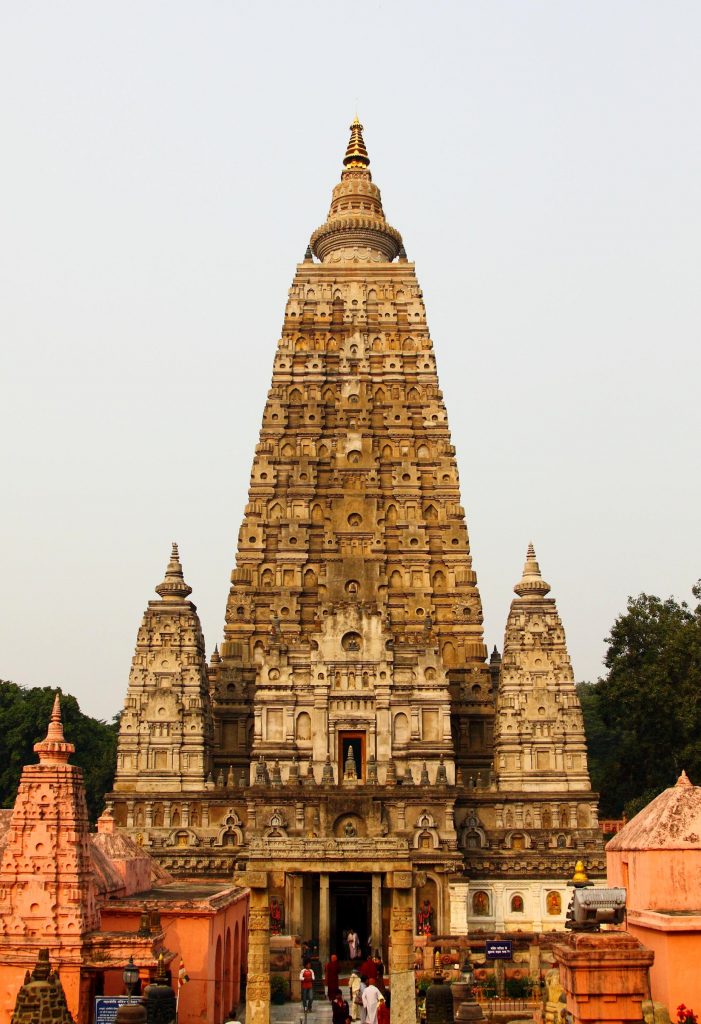
Gaya’s Mahabodhi tree is said to be the location where Lord Gautama Buddha acquired enlightenment. As a result, believers place a high value on the location. In addition, numerous more Hindu deities and images are idolized in the temple. The temple stands 55 meters (180 feet) tall.
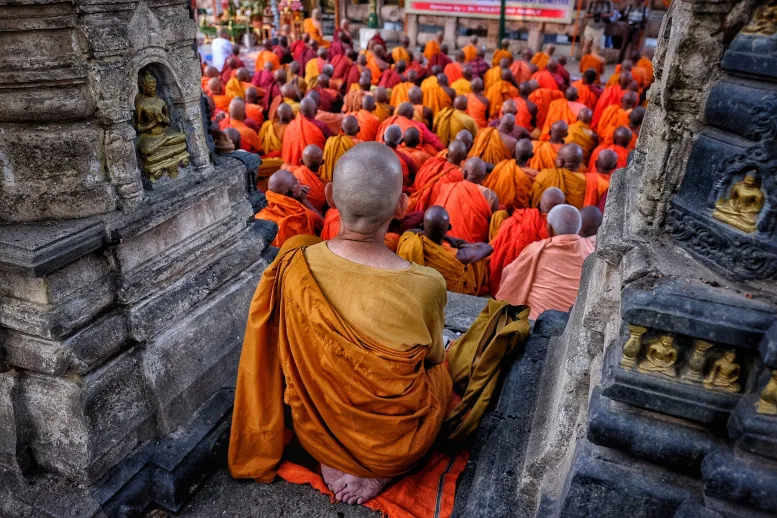
Its pyramidal shikhara (structure) is layered with nooks, arch patterns, and beautiful carvings. The walls of the two-story building are adorned with four towers, each similar to its centre equivalent but shorter in height and capped with an umbrella-like dome. A shrine within the temple houses a glass-encased yellow sandstone sculpture of the Buddha.
Baidyanath Temple
Without the need for question, Lord Shiva is one of the most revered gods among Hindu devotees and worshipers. Lord Shiva is adored in the presence of Lingas all over the globe, with the Jyotirlingas being the most fortunate. The Baidyanath Temple in Deoghar, Bihar, is one of twelve temples worldwide that idolize Jyotirlinga as their primary deity.

The Vaidyanatha temple is thus home to one of the twelve highly esteemed Jyotirlingas where Shiva resides. This temple complex, situated in Deoghar, Jharkhand, comprises the main temple of Baba Baidyanath, where the Jyotirlinga is placed, along with 21 other temples.
It is also claimed that Ravan always seemed to pray to Lord Shiva in the Baidyanath Temple in Bihar, according to the Hindu legendary classic Ramayana. Lord Shiva is regarded as a medical professional at this temple, as the title of God implies. The Shravani Mela is also held at Baidyanath Temple every year. Thousands of Shiva worshippers go from Sultanganj to Deoghar carrying sacred Gang water to present to Shivlinga as a mark of respect.
Pilgrims who embark on the annual Kanwar Yatra pilgrimage to Sultanganj in Bihar with other Shiva devotees, known as Kānvarias or “Bhole”. The pilgrimage involves collecting the holy waters of the Ganges and carrying them as an offering for hundreds of miles to the Baidyanath Temple.
Jalmandir
When temples are situated in breathtaking locales, there is nothing more a visitor or a devotee could wish for. Jalmandir in Bihar is a prime example of this.
Located in Pawapuri, a town known for its association with Lord Mahavira, the temple is a significant pilgrimage site for followers of Jainism. This architectural marvel is situated amidst a tranquil lake, adding to its ethereal beauty. The temple is dedicated to Lord Mahavira, the 24th Tirthankara, and is adorned with intricate carvings and exquisite artwork.
Pilgrims and visitors are drawn to the temple not only for its religious importance but also for its serene atmosphere, offering a respite from the chaos of daily life. The Jalmandir Temple in Bihar is a true testament to the state’s spiritual legacy and continues to inspire devotees and explorers alike with its divine aura.
As per the Jain society, the Pawapuri Jalmandir is a particularly suitable spot since it commemorates the area where Lord Mahavira gained Enlightenment. It is one of Pawpuri’s five principal temples, where Lord Mahavira’s “Charan Paduka,” or foot imprint, is idolized. A lovely lotus sanctuary also can be found here, which offers one of the greatest views that will stay with you forever.
Mangala Gowri Temple
Visitors just cannot overlook one of Bihar’s most prominent temples when you’re in the sacred sites of Gaya. The Mangala Gauri Temple is among India’s 18 Shakti Peethas.
This revered pilgrimage site is dedicated to Goddess Mangala Gowri. The ancient temple holds immense religious significance, particularly for devotees seeking blessings for marital harmony and fertility. The temple’s exquisite architecture and serene surroundings create a divine ambience, fostering a sense of peace and devotion among visitors.
The deity of Goddess Mangala Gowri is adorned with vibrant colours and intricate jewellery, captivating the hearts of those who come to seek her blessings. The temple also attracts many devotees during the auspicious festival of Navratri when elaborate rituals and celebrations occur.
This sacred sanctuary is devoted to Sati who is regarded as the first wife of Lord Shiva. It is mentioned in scriptures such as the Padma Purana, Vayu Purana, and Agni Purana. It is claimed that a piece of Sati’s body landed here. Thus, the location is adorned in the shape of breasts, a symbol of nourishment.
The temple’s origin may be traced back several centuries. The magnificence and splendour of the temple will undoubtedly captivate anyone. With its deep-rooted spiritual aura and cultural heritage, the Mangala Gowri Temple in Bihar continues to be a place of solace, faith, and devotion for countless pilgrims and devotees.
Patna Sahib
Sikhism is also a significant faith in Bihar, and Gurudwaras and other Sikhism-related religious sites are prevalent. The Patna Sahib Gurudwara, situated in Patna, Bihar’s capital, is one such place of devotion that attracts a large number of worshippers each day. A massive Gurudwara, accompanied by stunning architecture and workmanship, is a simple description of Patna Sahib and is also one of the top locations to head to in Patna.
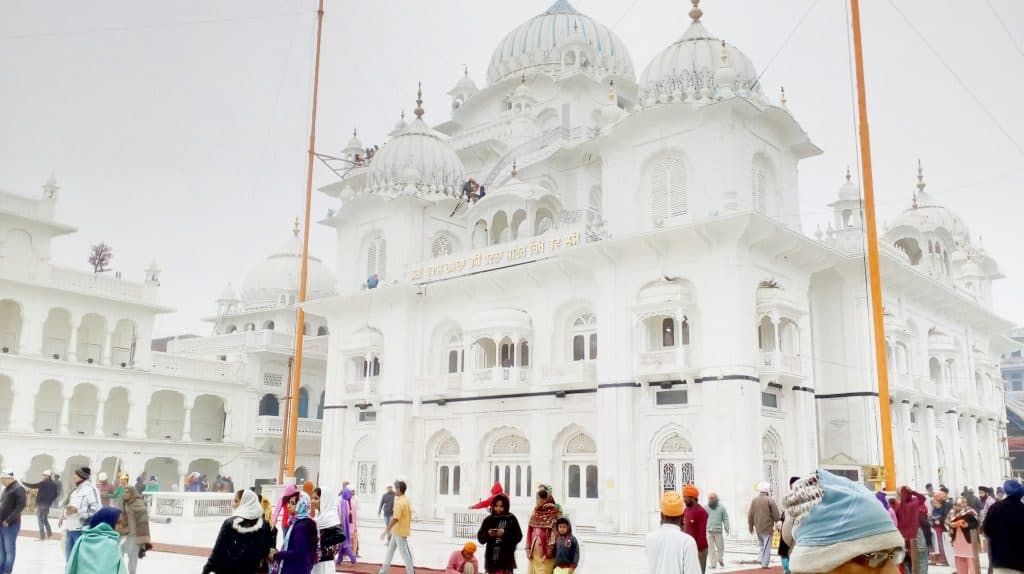
It was one of the five takhts constructed for Guru Gobind Singh by Maharaja Ranjit Singh. The Patna Sahib Gurudwara is one of the most revered religious sites for the Sikh community. This magnificent Gurudwara holds immense significance as it is believed to be the birthplace of Guru Gobind Singh, the tenth Sikh Guru.
The Gurudwara’s grand architecture, adorned with intricate carvings and vibrant colours, stands as a symbol of spiritual devotion and Sikh heritage. Devotees from all around the world flock to Patna Sahib to pay their respects and seek blessings.
The Gurudwara also houses the sacred Takht Sri Harmandir Sahib, a throne where Guru Gobind Singhji once sat. The atmosphere inside the Gurudwara is filled with tranquillity and devotion, as the melodious sounds of hymns and prayers resonate throughout the premises. The Patna Sahib Gurudwara is not only a place of worship but also a centre for Sikh culture, history, and community service.
The langar is available to all guests, and pilgrims are encouraged to assist in langar services as a tribute to God. One of the popular highlights of this location is the Prakash Parv, the birth anniversary of Guru Gobind Singh Ji, which is commemorated every year in the month of December. The Gurudwara continues to be a source of inspiration and a testament to the teachings of Sikhism, attracting devotees and visitors who seek spiritual solace and enlightenment.
Vishnupad Temple
Aside from the well-known Lord Shiva temples in the state of Bihar, visitors and devotees may also locate several Lord Vishnu temples in this region. Located on the banks of the Falgu River, the Vishnupad Temple in Gaya is a classic case of the above. The temple is itself a stunning sight, with a building style that is a combination of Dravidian and North Indian workmanship. Lord Vishnu, often regarded as the keeper of individuals, is the primary divine here.
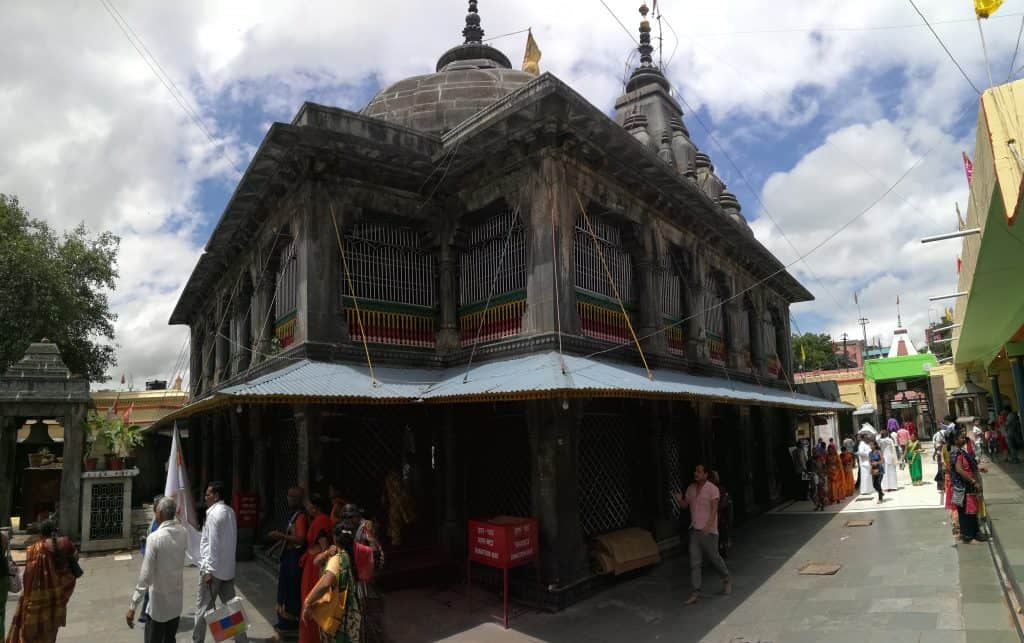
The major highlight of the temple is the 40-cm-long imprint of Lord Vishnu in basalt rock. As a result, the Vishnupad Temple is extremely popular for holy memorial rites. In the month of Pitripaksha, a unique fair is held on the temple grounds. It is a period when Hindus honour their ancestors, particularly via traditional dishes. During Pitripaksha, a Pind Daan performed by family and friends of the deceased soul is beneficial.
Garib Sthan Mandir
The Garib Sthan Mandir, also famous as the Garib Sthan Dham, is yet another important religious destination and prominent place of devotion devoted to Lord Shiva in Bihar. The Mandir is situated at the heart of Muzaffarpur and serves as the region’s identity. The magnificent settings of the temple are just astounding and something that you should not ignore while in Bihar.
The temple’s twin towers are also stunningly lovely, and staying the night here is a sheer delight. The lights and surroundings enhance the mood around the Garib Sthan Mandir. During the Hindu month of Shravan, Baba Gareebnath Temple is packed with devotees from all over the world.
Mandargiri Temple
The Mandargiri Temple in Banka is an outstanding demonstration of a Hindu and a Jain temple coexisting inside the same compound. According to the Vishnu Purana, the temple’s primary deity is Lord Narasimha, the fourth avatar of Lord Vishnu. The main god of devotion in the Mandargiri Digambar Jain temple, which is also housed in the very same compound, is Vasupujya, the twelfth Jain Tirthankara.
The temple’s architectural style showcases the abilities of the artisans. It is embellished with glassware and sculpture. The temple is also embellished with lofty pinnacles, which add to its splendour. The temple’s deity is coral-coloured and sits in the padmasana pose. It is noteworthy since it is nicely crafted. According to Hindu mythology, the Mandargiri Temple also tells the account of the sea churning.
Janki Mandir
There aren’t too many temples in India that idolize Goddess Sita, the consort of Lord Rama. as the primary goddess, but Janki Mandir in Sitamarhi has an everlasting connection with the Hindu legendary classic of Ramayana. The temple holds immense significance for devotees as it is believed to be the birthplace of Goddess Sita. It is also believed that according to the Ramayana when Lord Rama abandons Sita in the jungle, he returns to take her back to his realm.
By this time, Goddess Sita had broken the earth and returned to her mother’s lap. It was thought to be the site of the temple. Lord Rama was also present and afterwards travelled to his realm with his sons, Luv and Kush. According to Hindu mythology, the temple’s significance makes it a very attractive tourist and spiritual site in Bihar.
Janki Mandir is a captivating architectural marvel, adorned with intricate carvings and vibrant artwork that reflects the rich cultural heritage of Bihar. Pilgrims from far and wide visit this sacred site to pay homage to Goddess Sita and seek her blessings for marital bliss and happiness. The Janki Mandir in Bihar serves as a beacon of faith, inviting devotees to immerse themselves in the divine presence of Goddess Sita and find solace in her eternal grace.
Maa Patan Devi Temple
Have you ever questioned where the term Patna comes from? Yes, the name is believed to have derived from the city’s guardian, the Goddess MaaPatan Devi. The temple has been one of the country’s recognized 51 Siddha Shakti Peethas, which are dispersed throughout North India.
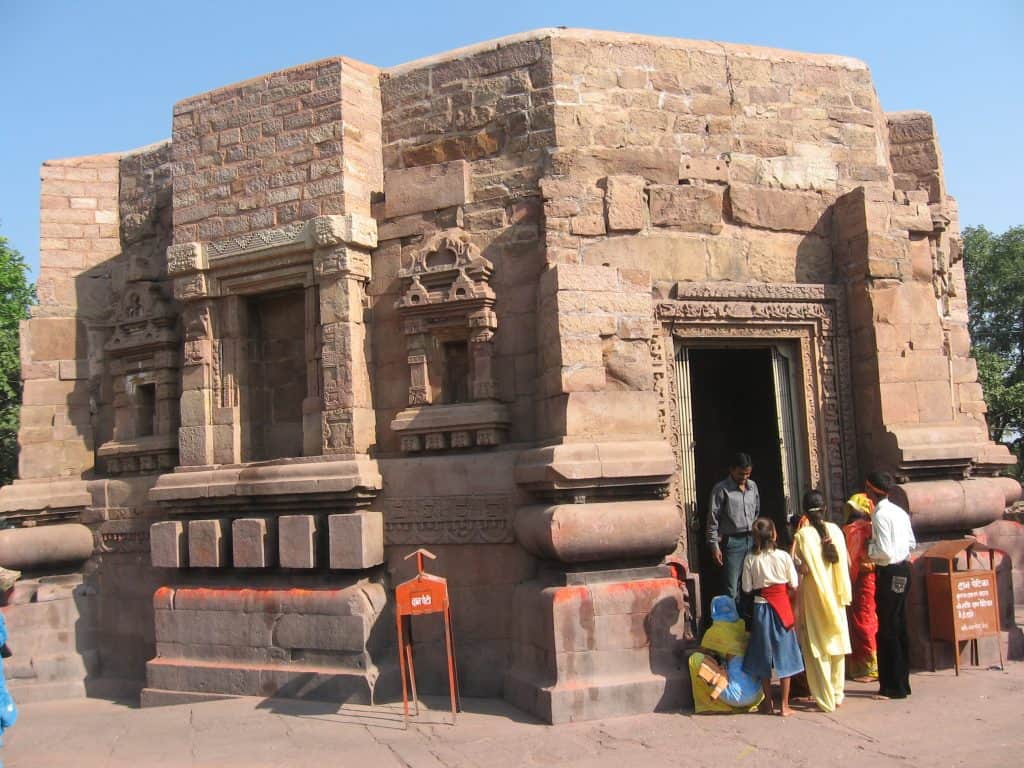
Like other Shakti Peethas, pilgrims here worship the primary goddess of devotion which seems to be Goddess Sati, Lord Shiva’s first wife. The ancient temple, formerly known as Maa Sarvanand Kari Patneshwari, is said to be the home of the Maa Durga. It is also a must-see in Patna since you can experience the landscape and the surrounding environment. This ancient temple holds immense cultural and historical significance, drawing devotees and visitors from all over.
The temple complex consists of several shrines, each dedicated to different forms of the goddess, including Mahakali, Mahalakshmi, and Mahasaraswati. The temple’s architecture showcases a blend of traditional and contemporary styles, with intricate carvings and vibrant colours adorning its walls. During the festival of Navratri, the temple comes alive with fervent devotion and elaborate celebrations.
Devotees flock to Maa Patan Devi Temple to seek the blessings of the goddess for protection, prosperity, and fulfilment of their desires. The temple’s serene ambience and spiritual aura create an atmosphere of divine grace, leaving a lasting impression on all who visit.
Bihar -a unique blend of spirituality and cultural heritage
Bihar holds a special place in the hearts of devotees and travellers alike because it offers a unique blend of spirituality, architectural grandeur, and cultural heritage. These temples serve as sanctuaries of peace and solace, where one can find respite from the hustle and bustle of everyday life.
Whether it’s the serene beauty of Jalmandir Temple, the divine aura of Mangala Gowri Temple, the historical significance of Patna Sahib Gurudwara, or the sacredness of Janki Mandir and Maa Patan Devi Temple, each temple in Bihar offers a glimpse into the rich tapestry of religious beliefs and traditions.
From the vibrant festivities during religious festivals to the quiet moments of contemplation, these temples provide a space for devotees to connect with their faith and experience a sense of transcendence. The temples of Bihar are not just physical structures but vessels of devotion, carrying the spiritual aspirations of generations.
As these temples continue to stand as pillars of reverence and spiritual strength, they reach out to all who seek peace, tranquillity, and a deeper connection with the divine.
Summarizer – in one quick glance
- Mahabodhi Temple in Gaya is one of Bihar’s most important temples and a significant pilgrim site for Buddhist devotees. It stands 180 feet tall.
- Baidyanath Temple in Deoghar houses Lord Shiva as its main deity and is one of the twelve temples that worship Jyotirlinga.
- Jalmandir, located in Pawapuri, pays homage to Lord Mahavira and marks the spot where he achieved Enlightenment. Charan Paduka is idolized here among the other five primary temples.
- Mangala Gowri Temple is among India’s 18 Shakti Peethas, devoted to Sati who is the first wife of Lord Shiva.
- Patna Sahib Gurudwara is a Sikhism-related religious site that attracts numerous worshippers each day. It has been one of the five takhts constructed for Guru Gobind Singh and hosts Prakash Parv, the birth anniversary of Guru Gobind Singh Ji every December.
- Vishnupad Temple in Gaya is a combination of Dravidian and North Indian architecture housing an imprint of Lord Vishnu in basalt rock. During Pitripaksha, a Pind Daan performed by family and friends of the deceased soul takes place here.
- Garib Sthan Mandir is a prominent religious destination devoted to Lord Shiva in Muzaffarpur, Bihar, and is especially busy during the Hindu month of Shravan.
- The Mandargiri Temple in Banka houses both Hindu and Jain temples, with its primary deity being Lord Narasimha (a form of Lord Vishnu) and Vasupujya (the twelfth Jain Tirthankara) respectively.
- Janki Mandir in Sitamarhi is one of the few temples in India that idolizes Goddess Sita as its primary goddess.
- Maa Patan Devi Temple in Patna is one of India’s recognized 51 Siddha Shakti Peethas, where pilgrims worship the primary goddess of devotion – Goddess Sati.
FAQs on Temples in Bihar
Q: What are some famous temples to visit in Bihar?
A: Bihar is home to several renowned temples. Some of the famous ones include:
- Mahabodhi Temple, Bodh Gaya: A UNESCO World Heritage Site, it is one of the most important Buddhist pilgrimage sites in the world. It is believed to be the place where Gautama Buddha attained enlightenment.
- Vishnupad Temple, Gaya: This temple is dedicated to Lord Vishnu and is situated on the banks of the Falgu River. It is considered highly sacred by Hindus, and devotees come here to perform rituals for their ancestors.
- Takht Sri Patna Sahib, Patna: It is a gurdwara (Sikh temple) located in Patna, the birthplace of Guru Gobind Singh, the tenth Sikh Guru. This gurdwara holds immense religious significance for Sikhs and is visited by numerous devotees every year.
- Mundeshwari Temple, Kaimur District: This ancient temple is dedicated to Goddess Shakti and is believed to be one of the oldest functional Hindu temples in India. It showcases a blend of architectural styles and attracts both devotees and history enthusiasts.
- Pawapuri Jain Temple, Nalanda: Pawapuri is a significant pilgrimage site for Jains, as it is the place where Lord Mahavira, the founder of Jainism, attained nirvana. The temple complex includes a marble temple and a sacred pond.
- Baba Baidyanath Temple, Deoghar: Located in Deoghar, this temple is one of the twelve Jyotirlingas (shrines dedicated to Lord Shiva) in India. It draws a large number of devotees, especially during the month of Shravana, for the holy pilgrimage called “Kanwar Yatra.”
Bihar is dotted with numerous more temples, each with its own unique significance and beauty.
Q: Are there any specific dress codes to follow while visiting temples in the state of Bihar?
A: While visiting temples and places of worship in Bihar, it is generally advisable to dress modestly and respectfully. Though there might not be strict dress codes enforced, it is customary to cover your shoulders and avoid wearing revealing or inappropriate clothing. You can remove your shoes before entering the inner sanctum of the temple, as it is considered a sign of respect.
Q: What are the timings of the temples in Bihar? Are they open on all days of the week?
A: The timings of temples in Bihar can vary, so it’s best to check the specific temple you plan to visit. However, most temples generally open early in the morning, around sunrise, and close in the evening, around sunset. Many temples remain open throughout the week, including weekends and public holidays. However, it’s a good practice to confirm the timings in advance to avoid any inconvenience.
Q: Can non-Hindus visit the temples in Bihar?
A: Yes, non-Hindus are generally allowed to visit temples in Bihar. Many temples in the state are open to people of all religions and welcome visitors from diverse backgrounds. However, it’s important to respect the religious practices and traditions followed within the temple premises. Some temples might have specific restrictions or guidelines for non-Hindu visitors, so it’s advisable to inquire beforehand or observe any signs or instructions displayed at the temple.
Q: Are there any festivals or special events celebrated at the temples in Bihar?
A: Yes, temples in Bihar often celebrate various festivals and special events. Some of the notable ones include:
- Mahavir Jayanti: Celebrated in Pawapuri and other Jain temples across Bihar, this festival marks the birth anniversary of Lord Mahavira, the 24th Jain Tirthankara.
- Buddha Purnima: Bodh Gaya, the birthplace of Buddhism, celebrates the birth, enlightenment, and death anniversary of Gautama Buddha during this festival.
- Shravani Mela: This month-long festival, also known as Kanwar Yatra, is observed during the Hindu month of Shravana. Devotees undertake a pilgrimage to the Baba Baidyanath Temple in Deoghar, carrying holy water from the Ganges River.
- Chhath Puja: One of the most significant festivals in Bihar, Chhath Puja is dedicated to the worship of the Sun God. Devotees gather at riverbanks and water bodies to offer prayers and make offerings to the Sun.
These are just a few examples, and there are several other festivals and events celebrated at temples throughout Bihar. The dates and nature of these celebrations may vary from year to year, so it’s advisable to check the local calendar or consult with the temple authorities for accurate information.
Read More: Latest



